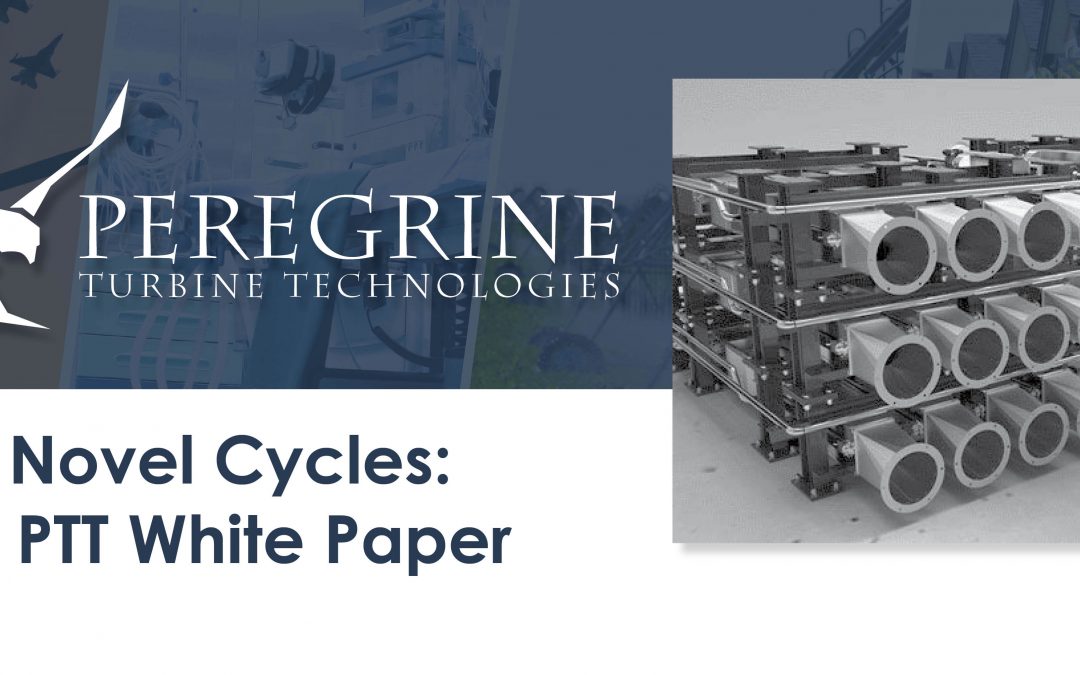Process Description The earliest variant of the PTT cycle, shown in Figure 1, is characterized by a symbiotic interaction between an air-Brayton cycle and a sCO2 Brayton cycle. The air discharged by the air-cycle compressor serves as a recuperation medium and is pre-heated by the low-pressure (LP) heat exchanger via the heat rejected from the sCO2 loop. Heat is added to the air stream via combustion and heat is then provided back to the sCO2 cycle via the high-pressure (HP) heat exchanger. PTT refers to the back-and-forth transmission of heat in this circular fashion as a “thermal flywheel” and it is a principal reason for the high net efficiency of the system, which exceeds 50% lower heating value (LHV) for a turbine inlet temperature of 1382F (750C) and a pressure ratio of 3.5:1. This performance was predicted analytically using Numerical Propulsion System Simulation (NPSS) thermodynamic cycle analysis software models.
The heat-rejection LP heat exchanger for the sCO2 loop suffers from the common pinch-point problem associated with supercritical fluids like sCO2, where the specific heat of the fluid spikes near the critical point resulting in significant mismatches between the heat capacity rate of the source and sink heat transfer fluids. The result is that it is difficult to manufacture a cost-effective heat exchanger that will achieve effectiveness numbers significantly >80%.


